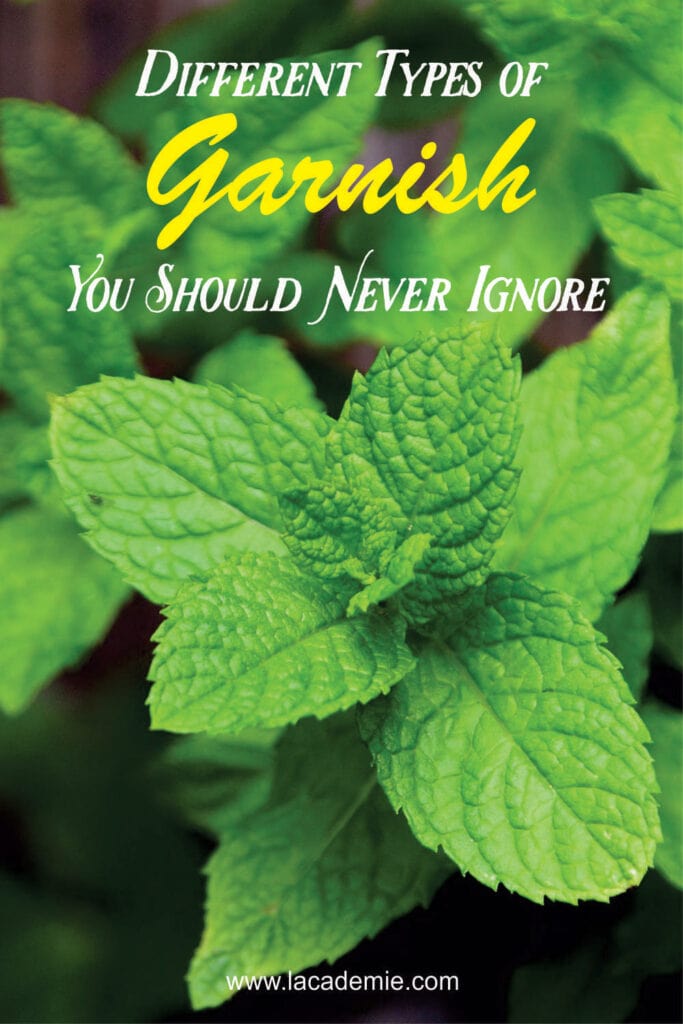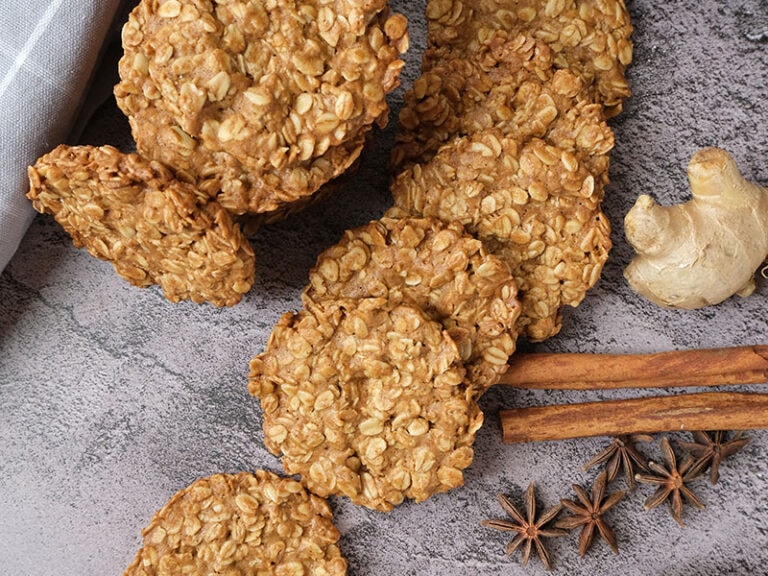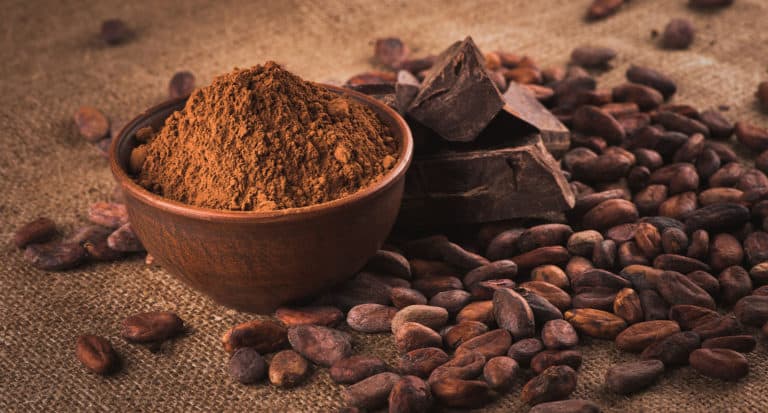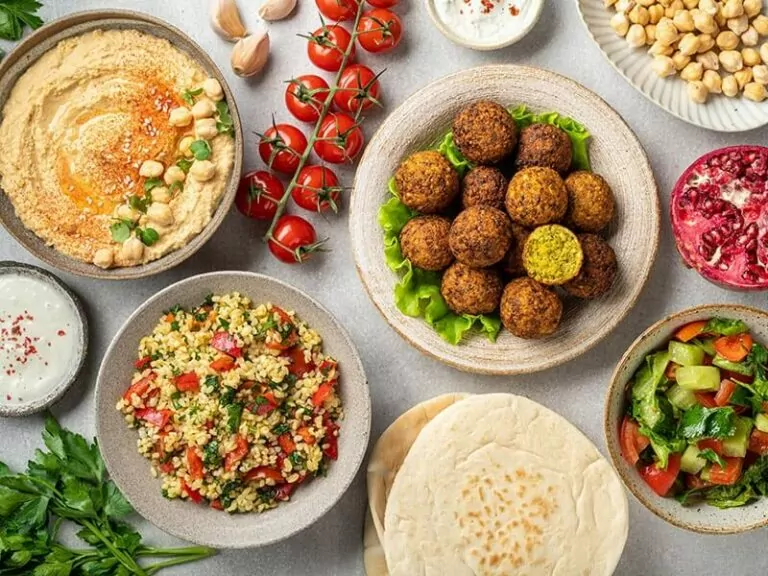It’s time to learn more about different types of garnish you can employ to make your delights taste even better and add the essential aromas to them. These garnishes also make your delicacies more visually appealing and enticing.
Since the information about these “magical taste enhancers” might be daunting for beginners, you can shorten the process by reading my article here. This post will show you everything you should know about these garnishes.
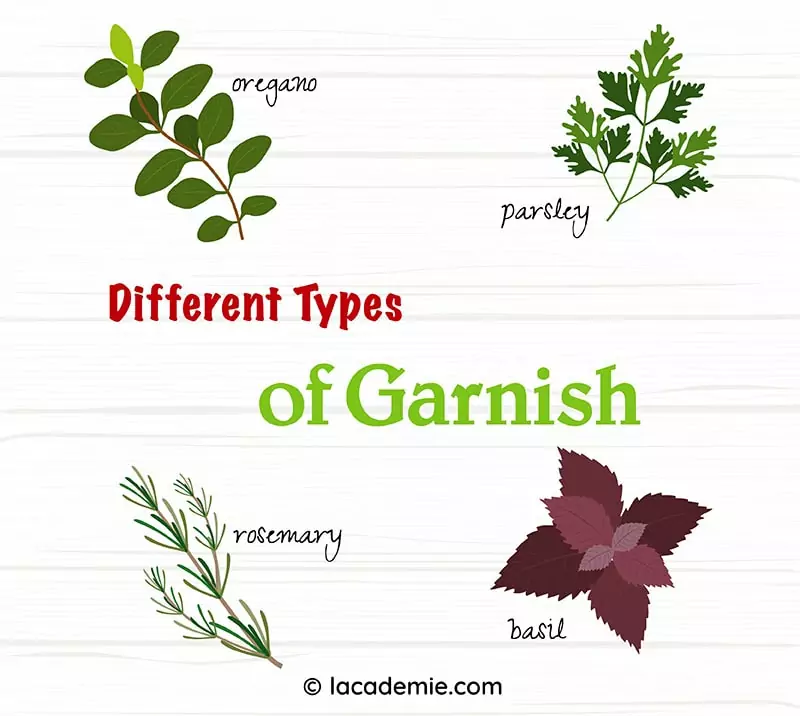
The Reasons Why Garnishing Your Delicacies Is A Must!

Many individuals assume that as long as their food is tasty, they will win the hearts of the guests, and the garnishment is unimportant. Garnishing only takes them more time and effort. But you are wrong, let’s find the reasons!
When eating at a restaurant, you can see that most dishes will be delicately and beautifully garnished. Aren’t you all excited when you look at those dishes? Yes, that is the most significant effect of garnish.
Creative garnish ideas impart a splash of color to your meals and make your plates more visually appealing. Sometimes your plates look bland and empty even if you have put all the food on them. In this situation, adding garnishes is the ideal solution to make your foods more enticing.
Secondly, the ingredients you garnish will more or less heighten the overall flavor of your dishes. They can add an extra flavor to your recipe, making it unique or rebalancing the existing taste of a delight.
Finally, the garnish will make a significant identification of a dish. Although you can identify a dish depending on colors and textures, some delicacies are similar. Some garnishes will clear confusion at this point.
13 Fresh Garnishes To Highlight Your Dishes
Fresh garnishes are always indispensable in your dishes. These fresh garnishes not only help to enhance the flavor of your delicacies but also make them more visually satisfying. Check this out now!
1. Cilantro
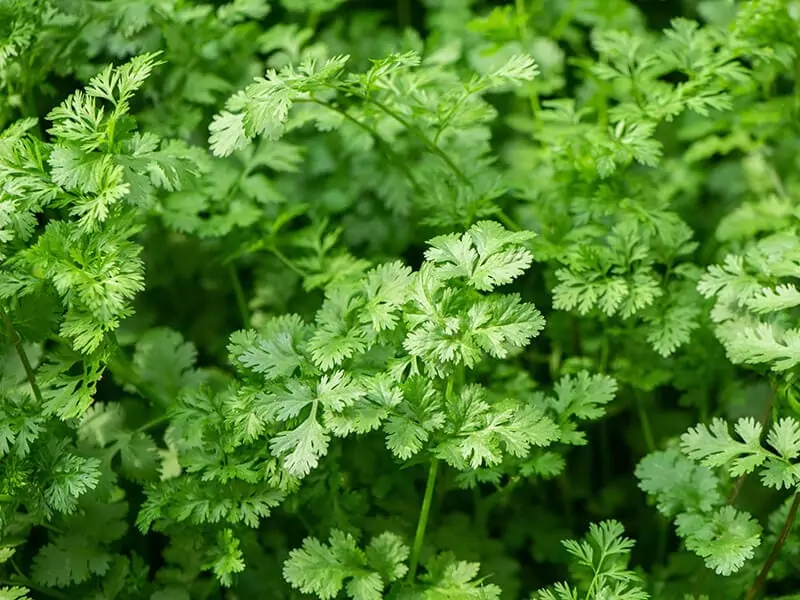
Cilantro seems to be the first-ever type of fresh garnish you might think of here since these things exist in various dishes, from the easiest to the fussiest ones. This leaf features an aromatic and citrusy flavor with a refreshing hint.
Cilantro is very popular in South American and Asian cuisines. You will find this garnish in various dishes such as sauces, smoothies, soups, and salads. It not only provides an intense flavor to your foods but also makes them more attractive.
If you don’t have this garnish, you can use some ideal cilantro alternatives, such as basil and parsley. You must chop cilantro leaves and add them to your dishes before serving. Remember that heat can destroy this fresh garnish’s flavor.
2. Parsley
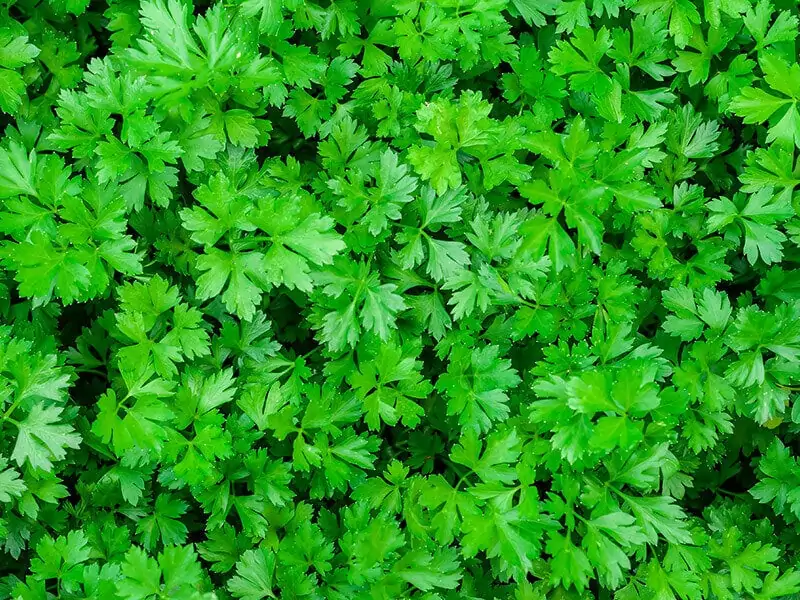
Have you ever made a mistake in distinguishing parsley and cilantro? Although these leafy herbs are very similar, there are distinctions between parsley and cilantro. Parsley has a light herbal aroma that is both refreshing and comforting.
Not only does this ingredient add freshness and complexity to your dish, but it also offers a good source of vitamins and other nutrients good for your health.
A touch of parsley is the main flavor booster of your food, giving your delights a herbaceous and slightly bitter taste. You use this type of garnish in the form of chopped or sprigs. It’s great to add to fresh salads, chicken, fish, or even soups.
The bright green color of parsley also makes your dishes more appealing. The alternatives to parsley are unlimited; you can consider them if you don’t have parsley available. Make your delicacies fancier with these leafy green herbs.
If you want to use chopped parsley for garnishment, this guide will help you.
3. Mint
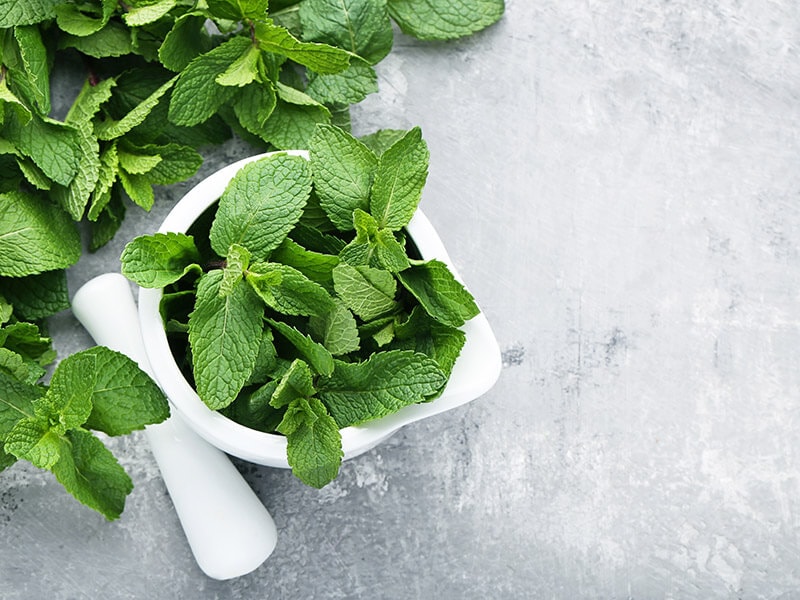
Mint is one of the most versatile types of fresh garnish on this list since you can use it in raw, cooked dishes or as a topping for your cocktails. You can also use mint as a garnish in your savory and sweet recipes, such as salads, juices, desserts, and scrambled eggs.
This fresh garnish lends a fresh and clean taste to your delicacies. Moreover, mint leaves give your dishes a lingering cool effect on the tongue, making your food more addictive. This versatile herb also makes a good pairing with many other flavors.
Although basil and mint have distinct differences, many people still confuse these herbs. You can chop mint before garnishing or using its sprigs. You can find many popular types of mint on the market, including apple mint and peppermint.
4. Chives
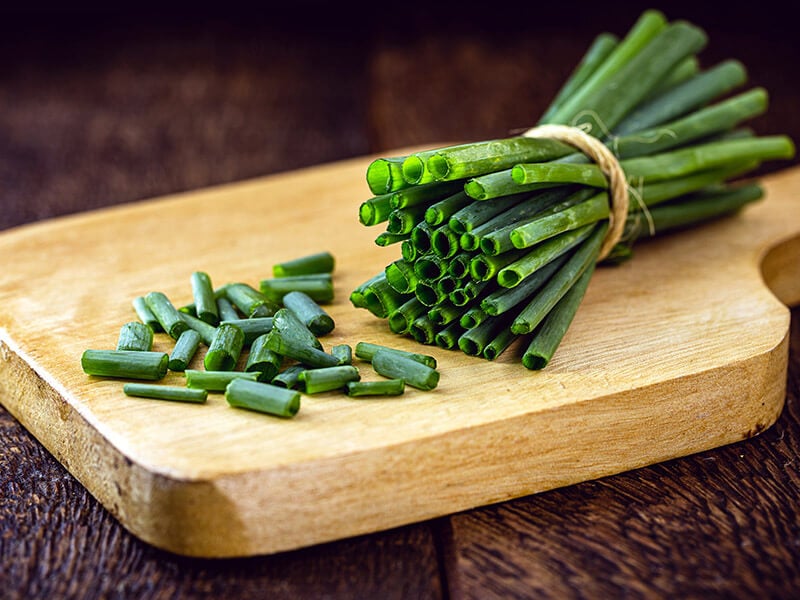
Have you ever utilized fresh chives to garnish your foods before? Adding them to your seafood dishes, egg recipes, or baked and mashed potatoes will elevate the overall flavor and make your delights more visually satisfying.
These chives feature a mild and delicate taste with an onion-y hint. You can describe the unique taste of chives as a perfect blend of onions and garlic. In some cases, if onions are not on hand, you can use chives as a replacement to add a touch of onion flavor to your delicacies.
You can use other herbs to replace chives; however, the taste will change slightly. Keep in mind that it’s best when you add chives at the last minute since the heat can diminish the flavor they provide.
5. Basil
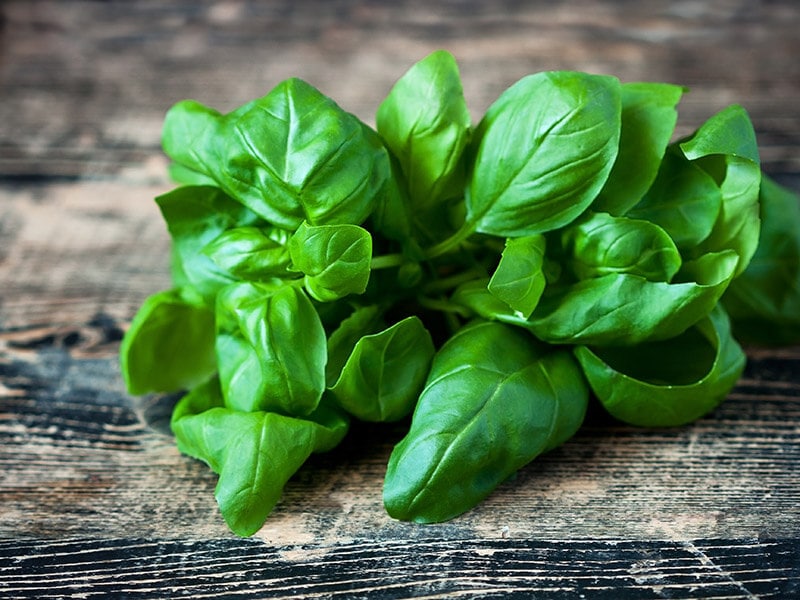
Regarding ideal garnishes, it is a must to talk about basil. Basil is one of the most common varieties of fresh garnishes. You will find this fresh herb in various foods, including soups, dips, and salads. Pesto recipes also start with the ideal fusion of basil and tomato.
Are you curious about the taste of basil, a member of the mint family? Simply put, it’s cool with a hint of subtle anise, adding a deeply aromatic herbaceous flavor to your dishes.
You can use it to balance eggplant’s earthiness or even highlight tomatoes’ sweetness. There are wide varieties of basil such as Thai basil, sweet basil, lettuce basil, and purple basil. Each of them is ideal for you to garnish your food.
How can basil be used in cooking besides as a garnish?
6. Oregano
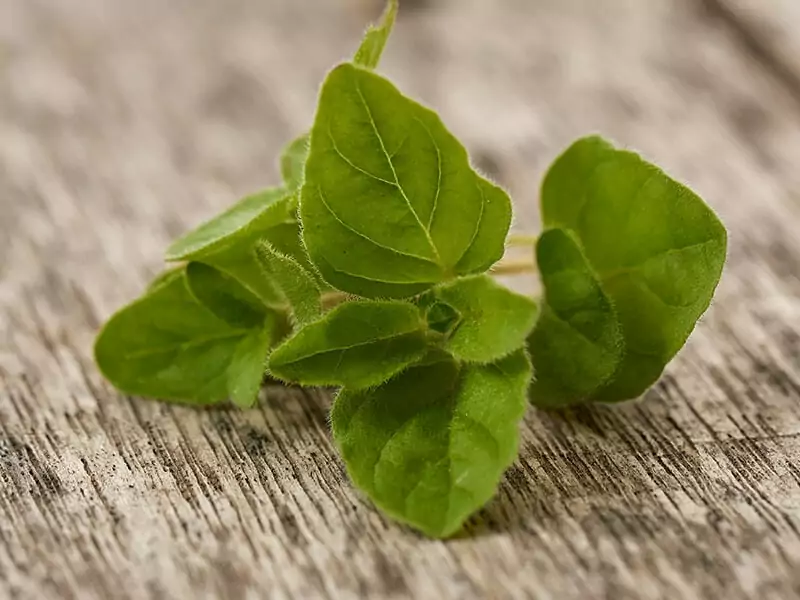
Originating in Greece, oregano has been popular worldwide for thousands of years. Many people consume oregano in dried and fresh forms. However, dried oregano is only suitable for cooking. If you need an ideal garnish, go for fresh oregano.
This fresh herb has a rich and earthy flavor with a hint of sweetness. This characteristic makes oregano becomes a good garnish in various delicacies. Thyme and oregano often appear in the same dish, so the gap between them is often forgotten.
But remember that thyme and oregano have different characteristics. You can add oregano in salads, sauces, pizzas, or mayonnaise to make a twist to your food.
7. Sorrel
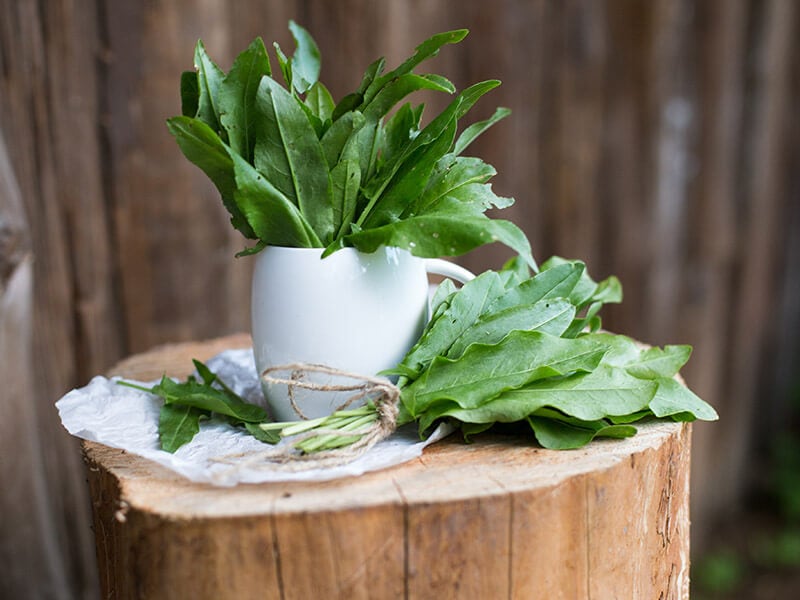
Cooking with sorrel is not strange in many cuisines such as Eastern Europe, Greece, and Albania. However, do you know that sorrel makes a great garnish? This fresh herb has a tart and bright flavor.
You can utilize this type of garnish in various dishes such as marinades, casseroles, soups, and sauces. Moreover, it is an ideal addition to your fish and veal.
Sorrel imparts a refreshing and tangy flavor to your recipes, making them more irresistible. Moreover, if you need an ideal substitute for spinach, give sorrel a chance to satisfy your taste.
8. Bay Leaves
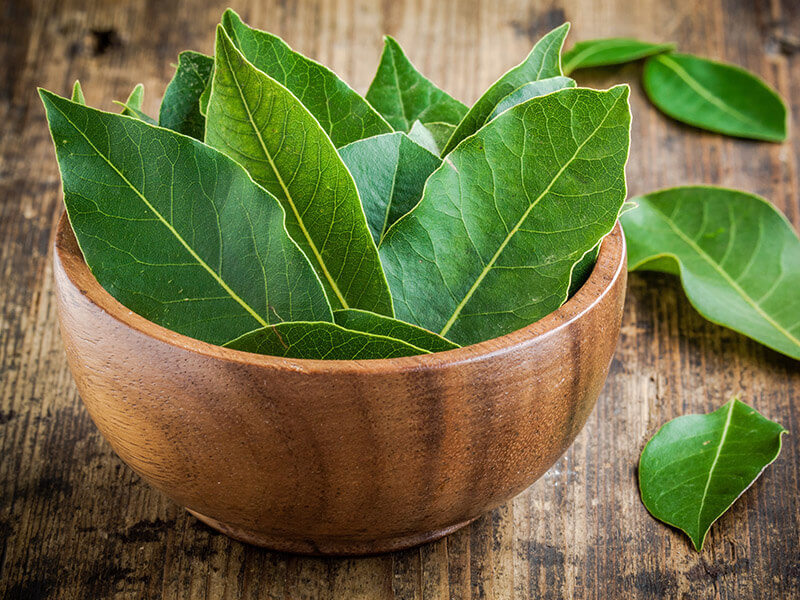
Bay leaves are one of the popular additions used in cooking. Many people use them to elevate the flavor of stews, soups, and braises. However, dried bay leaves are more suitable in those situations.
For garnishing, you should use fresh bay leaves. Fresh bay leaves have a strong, floral, and herbal flavor. They are great for garnishing canned foods and cocktails. With a touch of bay leaves, your dishes can get the best quality.
Basil and bay leaves are sometimes used interchangeably. However, basil and bay leaves have distinguished profiles. Fresh bay leaves might be tough to find, so remember to store them in the freezer for up to 3 months to retain their quality.
9. Thyme
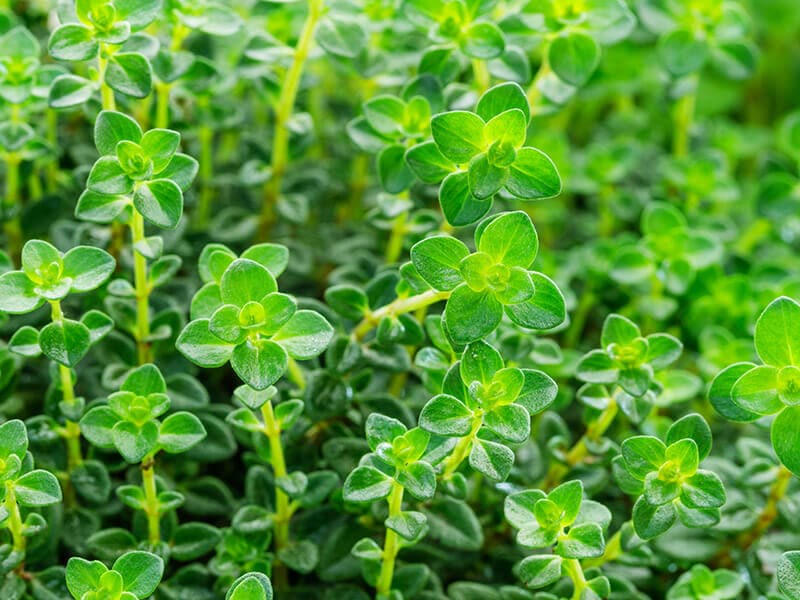
Another herb that I would like to introduce to you is thyme, one of the most common ingredients used for culinary purposes. So, what is thyme’s flavor that makes it so popular.?
Thyme leaves set them apart from others thanks to their earthy, slightly lemony, and minty flavor that is suitable for recipes cooked with beef or lamb.
Many people regard them as a perfect garnish in stews, soups, stuffings, and salads. You can also use fresh sprigs as an addition to vinegar and oil to make a fun twist for marinades and dressings.
Due to their popularity, you will frequently find standard and lemon thyme on the market. However, you can use many other types of thyme for garnish purposes, including dried and fresh.
It not only improves the appearance of your delicacies but also gives them a fresh and herbaceous taste. All you need to do is to sprinkle them on top of your dishes before serving.
Do you want to grow thyme for use whenever you want? Here are some tips you should know.
10. Rosemary
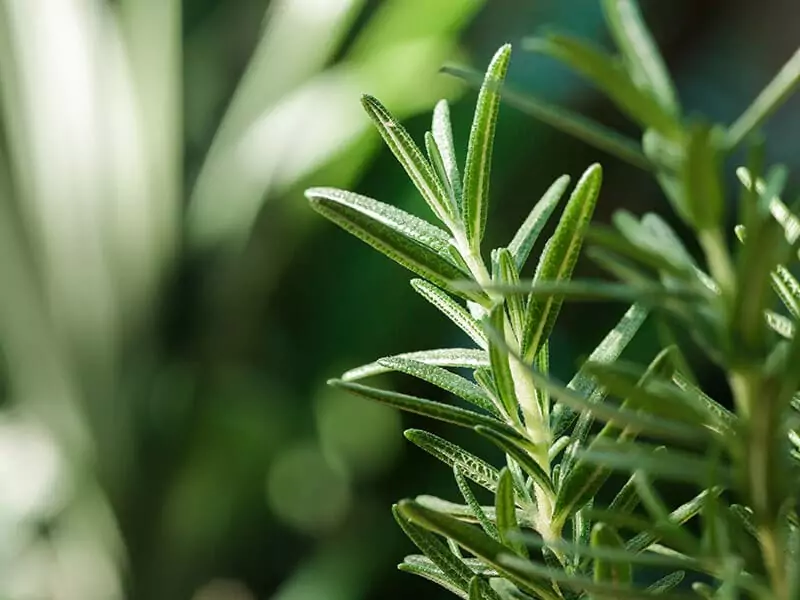
Don’t be confused between thyme and rosemary; they are two different things. Coming out with a needle-like appearance, rosemary produces a source of essential oil, giving these leaves a distinct aroma.
You can utilize rosemary in various dishes such as salads, roasted meat, and numerous lamb dishes. This garnish provides your delicacies with a powerful and lemony-pine-like flavor.
You can use the whole sprigs of this garnish to boost the taste of your dishes. Furthermore, they make your dishes more attractive and inviting than ever before. The purple color of rosemary flowers also works well for this purpose.
11. Lemongrass
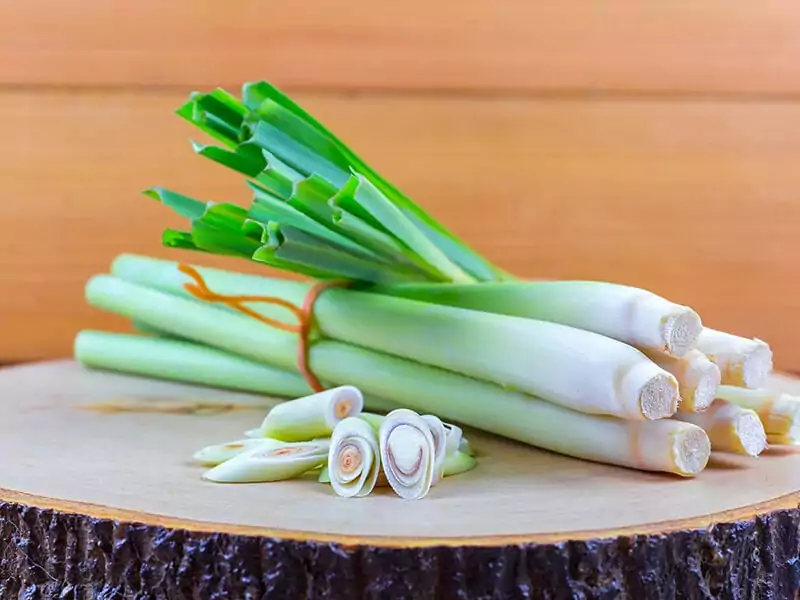
If you haven’t tried many Asian delicacies, this kind of ingredient may surprise you. Although it’s more frequently known as a component for marinades and sauces, using it fresh as a garnish is also a great way to go. This garnish boasts a lemon and citrus flavor.
Many people also call lemongrass the combination of mint and lemon due to its lovely fragrance. Therefore, when asked about some alternatives to lemongrass, many will choose lemon or lime zest.
Lemongrass is perfect for a cocktail garnish. You just need to add a stalk of lemongrass to your cocktail before serving. Besides, using crushed lemongrass stalks to garnish Pad Thai (a stir-fried rice noodle dish in Thailand cuisine) will add the perfect aroma to the dish.
You can buy this component at any Asian market near you. Lemongrass is also available in other supermarkets.
12. Lime
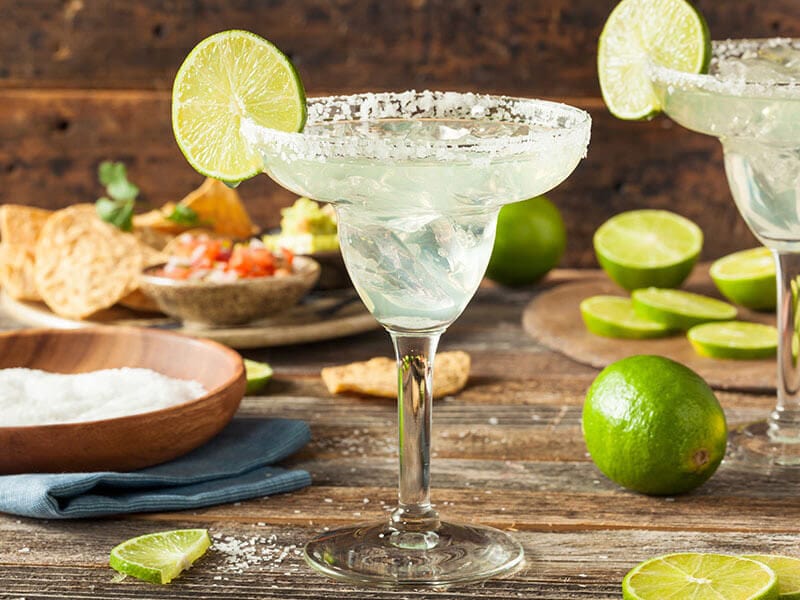
If you are a fan of cocktails, you must know that lime is one of the most popular garnishes in bars, especially in the United States. You can use this ingredient to make your alcoholic drinks more flavorful and attractive.
As you might know, lime features a sour and acidic taste. Therefore, including this garnish will balance the sweet and bland flavor of your cocktails. It can also enhance lime-flavored cocktails. You can utilize lime in the form of wheels, slices, wedges, and peels.
Lime garnish is suitable for a variety of drinks such as mojitos (a traditional Cuban cocktail), margaritas (a tequila-based cocktail), and other soda-based beverages. You can place your lime in the drink or slide them onto the rim of the glass.
These instructions will give you more cocktail garnish ideas with lime.
13. Edible Flowers
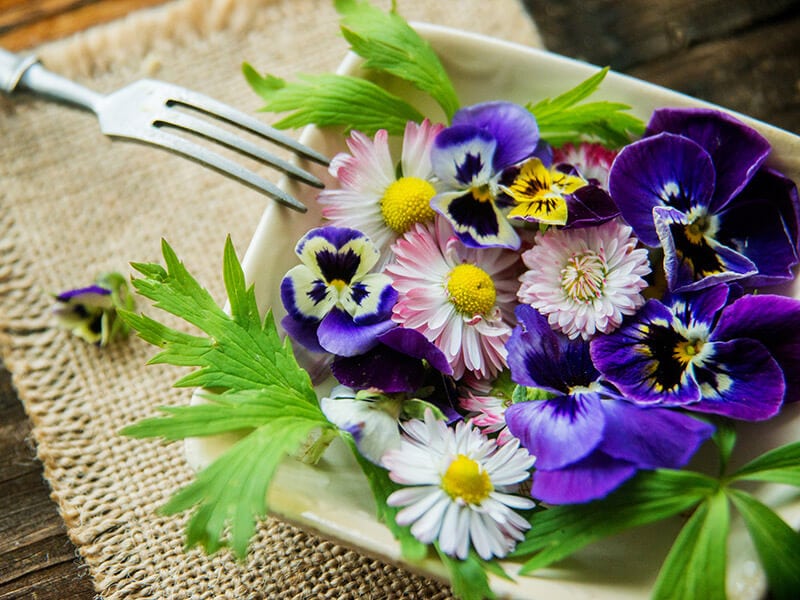
Flowers are always the top option for decorations since they have a specific aesthetic value. When it comes to food decor, they are also valuable. Of course, you should use edible flowers for this task.
There are countless edible flowers suitable for garnishing; you just need to choose one best for your recipes. Some typical ones include:
- Pansies: have a wide range of colors, such as white, yellow, purple, and blue, making your dishes more luxurious and appealing.
- Calendula flowers: The fresh petals are ideal for garnishing. You can separate them from the flower head and sprinkle them over salads. Moreover, you can use dried petals to garnish winter soups, making them more colorful.
- Cornflower: This kind of edible flower features a bright purple tone. You can utilize them to add a pop of color to your delicacies.
Besides, lavender, dandelions, honeysuckles, and citrus blossoms are some other famous edible flowers.
Each variety will provide a distinct flavor to your dish. You should select the most appropriate type based on the nature of your food. In addition to improving the taste, edible flowers play a crucial role in adding vibrant colors to your delicacies.
As a result, your food will be not only incredibly tasty but also perfectly visually satisfying. You can utilize edible flowers in salads or any of your favorite desserts. Adding them to your pastries or sprinkling them over ice cream will delight you magnificently.
7 Other Excellent Garnishes You Can Try
In addition to fresh garnishes, these processed ideas below also play an essential role in embellishing your dishes. Don’t ignore them if you want your food to get the best result.
14. Fried Sage
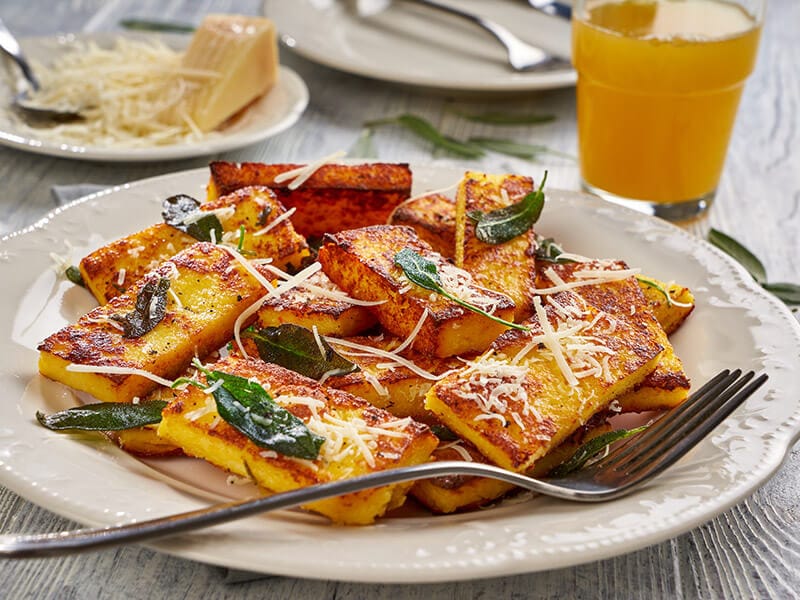
When mentioning sage, you will think about its pungent flavor, right? That’s also the reason why raw fresh sage is unsuitable for garnishing. Its strong taste will overpower the overall flavor of your dishes, making them lose their inherent quality.
However, fried sage is different. After frying, your sage becomes more subtle and delicate. Moreover, its crunchy texture is good for improving your experience and adds beauty to your recipes.
You can utilize fried sage to sprinkle over your side dishes, including fried potatoes, roasted squash, soups, and dressings. You can fry numerous types of sage for use, such as pineapple sage and common sage.
How to fry sage leaves for garnish? Check here for the answer now!
15. Nuts
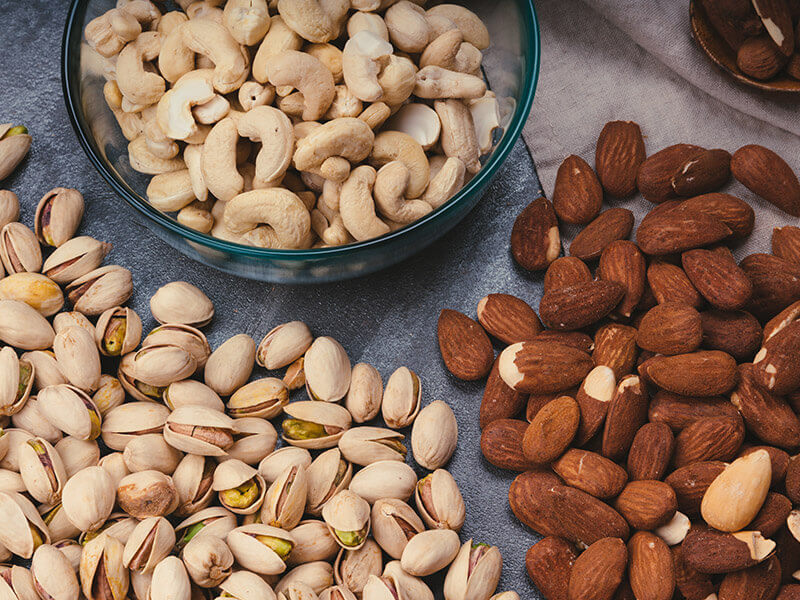
Let’s continue the interesting list today with one of the most loved and convenient garnishes, nuts. You can use various nuts to garnish your dishes, including cashews, almonds, and pistachios.
With this type of garnish, you can use any form of them to add to your dishes. You can grind, chop, slice, or even use whole nuts for garnishing your food before serving. Feel free to add this garnish to savory delicacies such as rice dishes, meat, fish, or salads.
Moreover, nuts are ideal for enhancing the quality of your desserts such as pastries, bread, cakes, and cookies. This ingredient not only adds a crunch to your recipes but also fills your plate perfectly.
16. Crumbled Bacon
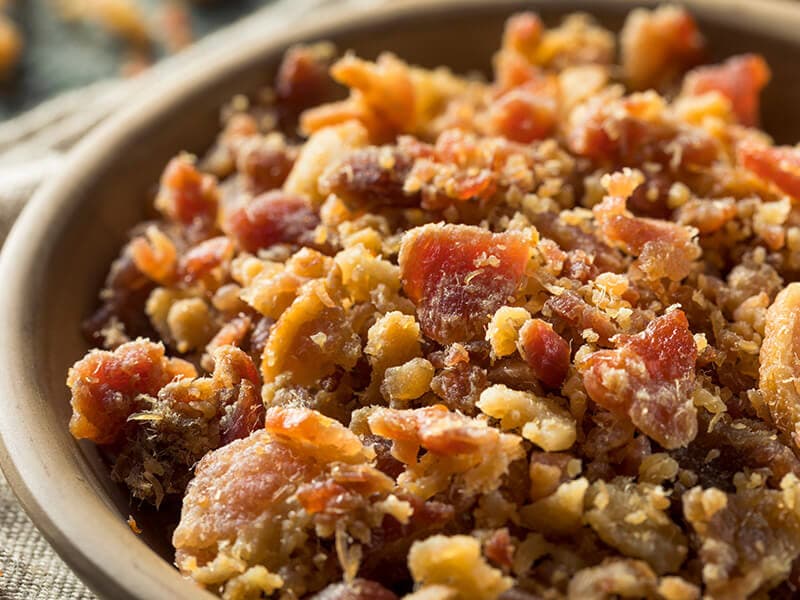
Bacon is famous as a versatile side dish for every delicacy. That’s why many people overlook this ingredient’s aesthetic appeal. Utilizing bacon to make crumbled bacon will work well as a garnish in many recipes. It also has a smoky and salty flavor, like original bacon.
This ingredient can garnish savory dishes such as chicken, fish, and soups. Furthermore, crumbled crunchy bacon is good for improving the flavor of sweet dishes like pancakes and ice cream.
All you need to do is cut your prepared bacon into pieces and bake them for a few minutes. Besides bringing the overall flavor to a new height, crumbled bacon also gives your foods a crunch.
17. Syrups
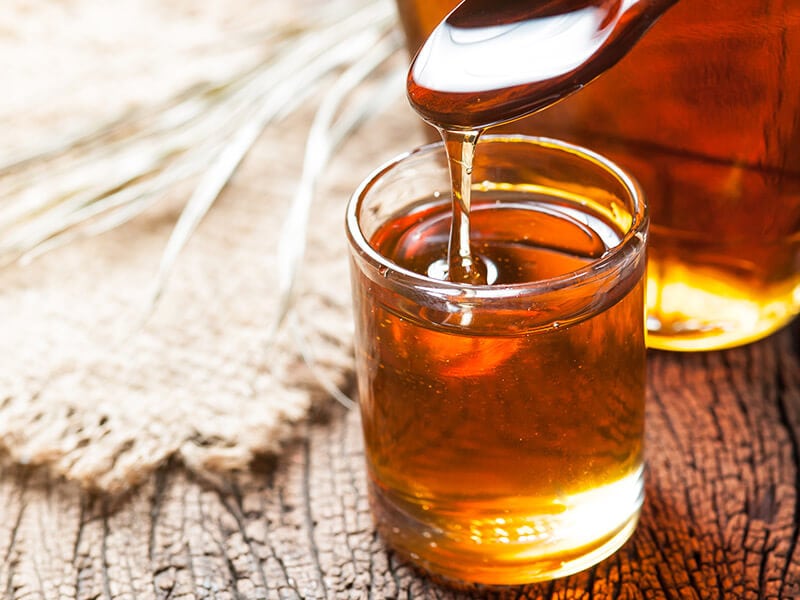
When mentioning different types of garnish, it is a must to talk about syrups, right? Syrups feature a sweet flavor and a vibrant color. Syrups will satisfy you whether you need a flavor booster or something colorful to liven up your dishes.
There are many types of syrups you can consider utilizing on your plates. Some typical kinds include maple syrup, chocolate syrups, strawberries syrups, and corn syrups. To use this garnish, you just need to pour syrups on top of your desserts before serving.
18. Sauces
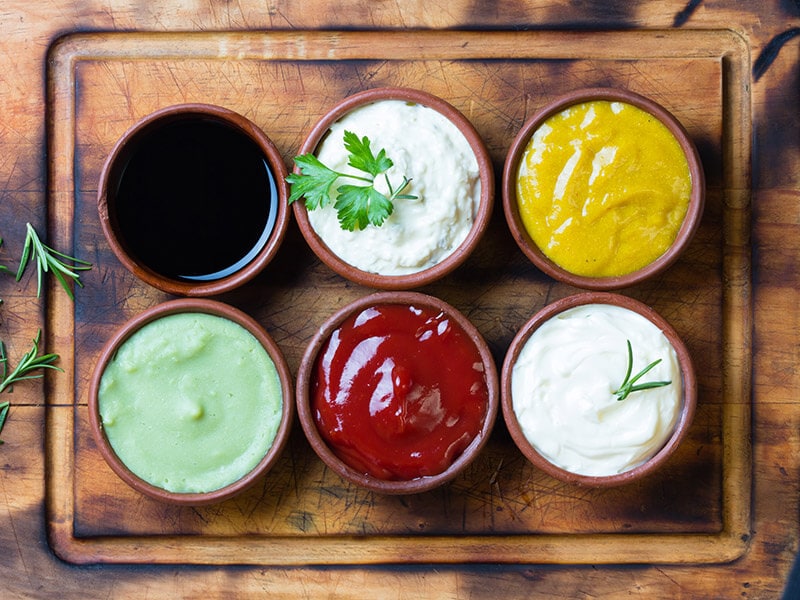
This list cannot be complete without the inclusion of sauces, right? I think sauces are one of the most convenient ingredients for garnishment because you can use any sauces you have prepared during the cooking process.
Sauces play a crucial role in improving your dishes’ appearance and flavor. However, remember that sauces are only suitable for more filling meals because they can’t increase the amount of food on your plate.
This garnish is great for savory dishes, especially delicacies made with meats and steaks. The most common are BBQ sauces and teriyaki (an authentic Japanese sauce). Let’s utilize this flavorful garnish to enhance your experience.
19. Crunchy Breadcrumbs
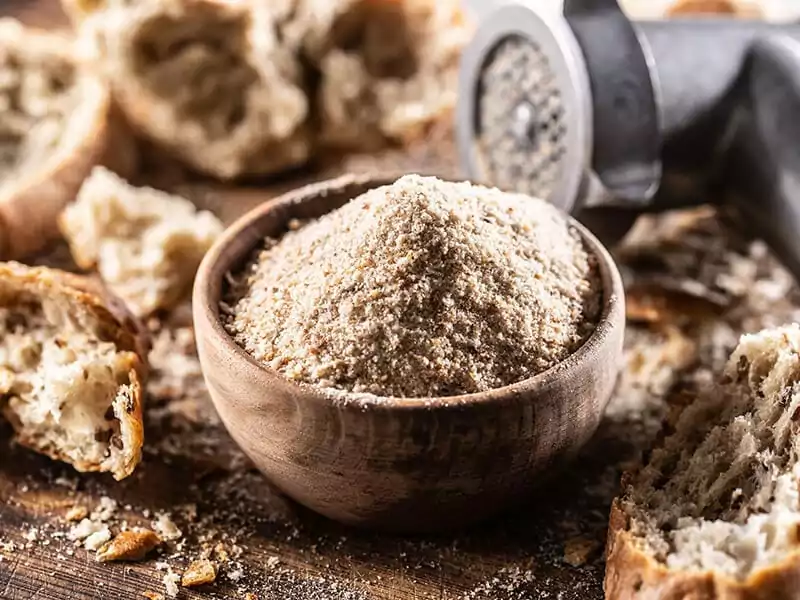
Crunchy breadcrumbs are essential in adding exquisite texture and a mildly nutty taste to the overall success of the dish. This type of garnish is very straightforward to make.
You just need to prepare typical elements such as olive oil and breadcrumbs. Next, fry your breadcrumbs in the pan until you achieve a crispy texture and a golden appearance. The final step is to crumble them by hand or with a blender.
Your garnish is ready to serve. You can sprinkle your crunchy breadcrumbs on top of your salads, creamy pasta dishes, or other dishes you like.
Make breadcrumbs at home right now!
20. Purees

Let’s end today’s helpful list with one of the most colorful garnishes, purees. As suggested, this garnish will give your dishes a vibrant color depending on the kinds of purees you choose.
Moreover, purees are suitable for garnishing the plate that still has much space and needs to be filled. You can also use purees as a flavor enhancement in your dishes. They are perfectly versatile, right?
With this garnish, you can pour them over your delights, like when using other sauces or syrups. Otherwise, you can also spread purees over the plate to make it more appealing and beautiful. One of the most popular purees is potato puree and tomato puree.
Roll Up Your Sleeves And Start Garnishing Your Food!
Are you excited about making your dishes more appealing and beautiful? I hope the list will inspire you to create compelling ideas for decorating your delights. If your food is only delicious, it’s not enough because no one wants to enjoy a dish that doesn’t look good, right?
Do you have any other garnish ideas? Feel free to comment and share with me and others your opinions. I will be happier if you can share this post with your beloved ones. Don’t stop being creative; let’s come up with even more great garnish ideas!
